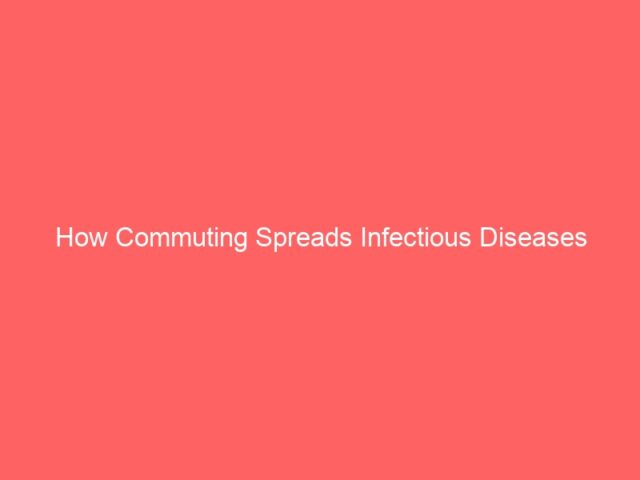South Korea is creating a commuter mannequin to map particular person commuting routes utilizing cell phone information, capturing distinct outbreak patterns between dense city areas and remoted rural areas.
RT’s Three Key Takeaways:
- New Modeling Method – Researchers in South Korea developed a Commuter Metapopulation Mannequin (CMPM) that comes with actual commuting information to extra precisely simulate how infectious ailments unfold by day by day human motion.
- Real looking Illness Monitoring – In contrast to conventional fashions, CMPM maps particular person commuting routes utilizing cell phone information, capturing distinct outbreak patterns between dense city areas and remoted rural areas.
- Focused Pandemic Response – The mannequin’s insights spotlight the significance of mobility-based epidemic modeling to information smarter, localized interventions as an alternative of broad, uniform lockdowns.
For numerous tens of millions throughout the globe, commuting to work or faculty is an on a regular basis routine. However throughout a pandemic, the follow can contribute enormously to the unfold of infectious illness, a incontrovertible fact that many conventional meta-population fashions typically overlook as a result of they’re designed primarily for migration and deal with folks as in the event that they not often transfer domestically.
In Chaos, by AIP Publishing, a staff of researchers from South Korea launched a Commuter Metapopulation Mannequin (CMPM) to handle these limitations and increase the main focus to incorporate day by day mobility patterns. The mannequin was used to simulate the unfold of COVID-19 with precise commuting information supplied by the nation’s second-largest telecommunication community, revealing it may higher seize spatial selection in outbreak patterns, from speedy unfold in city facilities to delayed or localized outbreaks in rural areas.
“In contrast to conventional fashions that deal with inhabitants as a single unit, CMPM follows people alongside their precise commuting routes,” mentioned writer Jae Woo Lee. “It makes use of information from cell phones to trace when folks depart their properties, the place they go in the course of the day, and once they return at night time. This offers scientists a way more life like map of how ailments unfold by on a regular basis human motion.”
In distinction to conventional metapopulation monitoring fashions, the CMPM is designed to reallocate populations primarily based on commuting flows, moderately than static regional boundaries, and seems to be a lot better suited to mirror the real-life nuances of inhabitants mobility. For instance, the mannequin can monitor how infections can rapidly flare up in giant, crowded cities like Seoul and unfold to close by cities linked by commuter visitors, and the way extra remoted locations like Jeju Island are prone to see a a lot slower unfold since fewer folks transfer out and in.
“Conventional fashions would have missed these essential variations, predicting a smoother, virtually uniform unfold that doesn’t match actuality,” mentioned Lee.
The researchers hope the improved efficiency of their mannequin underscores the important position of life like mobility information in epidemic modeling and that it may well assist inform the event of focused intervention methods that save lives.
“Our day by day journeys don’t simply outline our routines; in addition they form the trail of a pandemic,” mentioned Lee. “By displaying how commuting patterns [with real-time data] form this path, the CMPM may help governments and well being officers design smarter responses. As a substitute of a one-size-fits-all lockdown, they’ll give attention to high-traffic commuter corridors or shield weak areas with restricted connections.”













